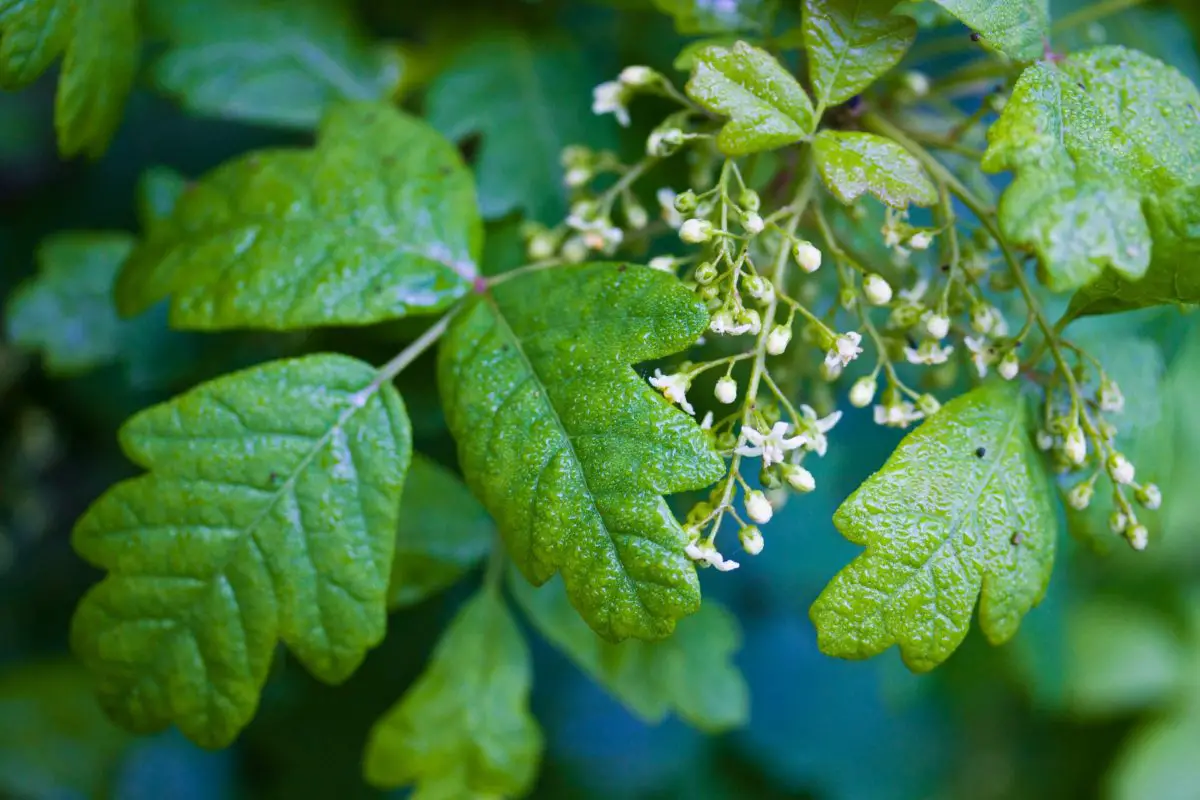
Image – Ken-ichi Ueda
There are a number of plants that produce substances that are very useful for defending themselves against herbivorous animals. Some of them are used today to make medicine for humans, usually to relieve severe pain. But we must be careful, because although they can be great garden plants, they can also be very dangerous if we do not know them well.
One of these plants is actually several. It is known as rhus toxicodendronand it is a series of trees and shrubs that have very beautiful leaves, yes, but irritating.
Origin and characteristics of the Toxicodendron
Toxicodendrons are woody plants that grow as trees, shrubs or vines that belong to the Anacardiaceae family, native to America and Asia. One of the main characteristics is that produce urushiol, which is an oil that causes irritation on contact and that, in addition, it can cause serious allergic reactions. For this reason, one of the common names they receive is that of a poisonous tree, and its use as ornamental plants is obviously not allowed.
Its leaves are green, pinnate, lobed or simple, with a serrated or entire margin.. Depending on the species and the conditions of the place where it lives, these can change color, going from green to red or yellow; and it may even be the case that the same plant has leaves of all these colors. The fruit is a white or grayish drupe, which in some countries is used to make wax.
Species
The genus is made up of 28 species. Of these, the best known are the following:
Toxicodendron diversilobum

Image – Wikimedia / Wikimedia Commons
The Toxicodendron diversilobum is a woody deciduous vine native to western North America called Pacific Poison Oak. Its size can be impressive, since if it has a support to climb it is easy to reach 30 meters in lengthmaintaining a trunk only 20 centimeters thick.
Toxicodendron orientale

Image – Wikimedia / Qwert1234
The Toxicodendron orientale is a deciduous shrub or climber native to eastern Asia known as Asian poison ivy. It can grow to about 4-5 meters tall. During the fall it takes on a nice red color before going to rest until spring arrives. It is also interesting to say that, although it can cause allergic dermatitis in humans, birds and other animals consume its leaves and / or drupes without problems.
Toxicodendron potaninii
The Toxicodendron potaninii It is a deciduous tree native to Korea and western China known as the Lacquer tree or Chinese lacquered tree. Reaches a height of 12 metersand it is a plant that is used to produce lacquer. Also, in some countries such as the United Kingdom it is allowed to use it as an ornamental plant.
Toxicodendron radicans

It is the best known by far. The Toxicodendron radicansknown as poison ivy, Mexican guan or poison sumac, is a climber native to North America whose height does not usually exceed 10 meters. The leaves are made up of three pinnae or leaflets, they are alternate and have a glossy or matt green color.
Toxicodendron succedaneum

Image – Flickr / Tatters ✾
The Toxicodendron succedaneum (before Rhus succedanea) is a tree native to Asia (China, Japan, Taiwan, India and Malaysia) that reaches a height of 6 meters. Its leaves are bright green on the upper side and gray or bluish on the underside. It is popularly called the wax tree, since a wax is extracted from the fruits that is used as a varnish.
What uses does rhus toxicodendron have?
That is a difficult question, since it depends a lot on the country you are in and the specific species. I could tell you that they are very interesting plants, not only because they have a high ornamental value, but also because they resist cold and moderate frosts very well. But telling you only that would not be telling you the whole truth.
As we mentioned at the beginning, Toxicodendrons are plants capable of producing significant allergic reactions only when touched. In fact, the symptoms can be very annoying: redness, irritation,… you could even get a “bubble”, like when we get sunburned. Also, if it is burned and we inhale the smoke, it can irritate the lungs and cause difficulty in breathing. In order to alleviate and cure these symptoms you have to go to the doctor as soon as possible.
Does it have any medicinal use?

Image – Flickr / Sam Fraser-Smith
The Toxicodendron radicans It is used in homeopathy to relieve muscle, rheumatic and joint pain, but since we have not found any scientific study that shows that this plant can really be used to treat these ailments (and that we are not doctors either) We can only recommend that you consult with a specialist doctor. But if you find any, please let us know.
Health is the most important thing we have, that is why we must take care of it the best we know how, knowing the plants and learning from them to know how to manipulate them when the time comes. We hope this article has served you to that end.
